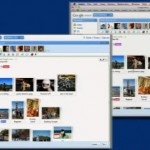Malcolm Gladwell recently wrote about the nature of invention, and a society’s response to it. We revere scientists as heroes, for inventing solutions to our toughest problems. Yet Gladwell points out that these geniuses seem to be more vessels than virtuosos.
The inspiration for a particular technology seems to arise “in the air,” to be picked up by the right inventive minds and made real. In many cases, such as the story of the invention of the telephone, there is more than one inventor. In addition to Alexander Graham Bell, there seems to be a parallel invention of the device by a fellow by the name of Elisha Gray. Why is he unknown? As often happens, the awarding of bragging rights turns into a race to the patent office.
Science historians call this phenomenon “multiples.”
The same creative insights seem to strike a number of inventors — often scattered across the globe — at the same time in history. Gladwell reminds us that the uncertainly of whom was the real originator makes our inclination to name a device after its “inventor” a dicey proposition at best:
We think we’re pinning medals on heroes. In fact, we’re pinning tails on donkeys.
This made me think of open source applications. Perhaps it’s fitting that we do not commonly know the single inventor of PHP technology — not because so many have built upon this foundation, but because the foundation itself was “in the air,” ready to be interpreted into code. I use PHP as an example, but any open source innovation will do to make my point.
Few would argue with the genius behind PHP. So why don’t we see multiples of web design? Aren’t good designs of sites “in the air” as well?
Singulars versus Multiples
Gladwell provides a hint to an answer when he states, “[a historian’s observation] about scientific geniuses is clearly not true of artistic geniuses.” He goes on as follows:
A work of artistic genius is singular … Shakespeare owned Hamlet because he created him, as none other before or since could. Alexander Graham Bell owned the telephone only because his patent application landed on the examiner’s desk a few hours before Gray’s.
I find this distinction fascinating, because both types of genius are put into play in the creation of a great interactive experience. I love that one part of the process — the technology — uses the work of many to channel something that is clearly superior to others it replaces, yet is impossible to attribute to a single creator. Yet the part of the process that creates the most intimate parts of that application — the design — are invariably one person’s handiwork.
That is the true genius of web design, and it explains why a digital world will never make a web designer less “singular” than, say, a great playwright or composer.

